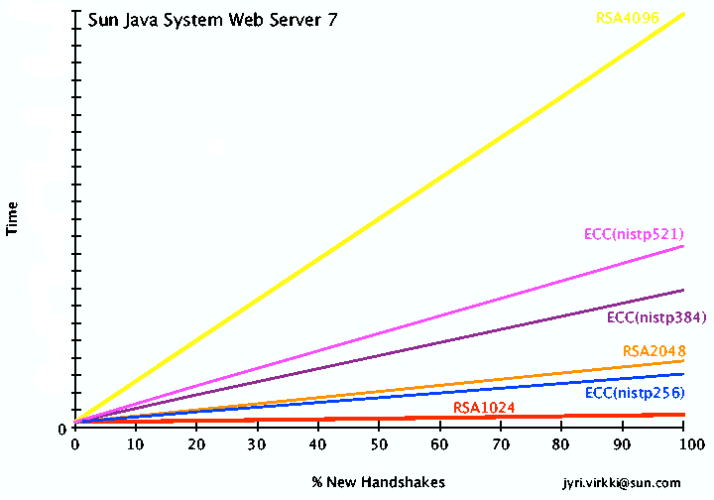Unless you have written consumers or providers of crypto functionality you probably don’t have much interaction with PKCS#11. What is it? Quoting from RSA Labs, “this standard specifies an API, called Cryptoki, to devices which hold cryptographic information and perform cryptographic functions”.
As a web server administrator you generally don’t have to deal with it either, even though you probably know that the JES Web Server supports PKCS#11 compatible devices for the crypto functionality used by SSL/TLS.
Recently I added a feature which we plan on including in some upcoming update of JES Web Server 7.0, which allows bypassing the PKCS#11 layer for SSL operations. What does that mean? Well, basically it means your server will be able to handle SSL requests faster ;-)
Here is a coarse high level diagram of the relationship between the various building blocks which comprise the SSL support in the web server:

As you can see, NSS always interacts with the crypto device via the PKCS#11 API, whether you’re using a crypto accelerator or the Solaris 10 crypto framework or even when using the built-in software token (softoken).
Of course, this adds some overhead. NSS must construct PKCS#11 structures and call the right APIs and the softoken must decode these structures and pass on the data to the underlying crypto primitives. Since the softoken is part of NSS one might argue that NSS could simply call the crypto functions directly. In a nutshell, that is what the PKCS#11 bypass does. This is conceptually represented in the diagram above by the dotted line red arrow.
For most use cases this is a no-brainer – once this feature is released SSL will perform better. The bypass will be on by default so you don’t even need to do anything other than upgrade your server. It’ll just be faster (I should say even faster!).
There are some details to be aware of, however.
First, NSS’s interaction with the crypto device is “sticky”. If the server key (associated with the certificate given in the server-cert-nickname element of server.xml) lives in Token-A, operations related to SSL sessions initiated with this key will also be performed by Token-A. Note that this applies to all subsequent operations (as long as Token-A is capable of performing them), not only the handshake operations which directly make use of the private key material (the operations which directly use the private key material are always performed by the token in which the private key is stored, regardless of bypass!)
Bypass removes this “stickyness”. When bypass is active NSS will directly use its softoken for all subsequent operations, bypassing not just PKCS#11 overhead but also the external device. In order for this to occur, some of the session-related key material must be extracted from the device and made available to the softoken. It is possible some devices might not support this operation, in which case bypass cannot occur. The good news is that the server will test for this condition – if the device cannot support this requirement, bypass is automatically disabled.
What if the external crypto device is faster than the softoken? Realistically, this not very likely. It would have to be so much faster that it can overcome not only the overhead of PKCS#11 calls but also the overhead of transporting the data to and from the device. But as with all performance-related tunables, you should test both settings using an environment which matches your production setup and loads.
The final detail is related to certification compliance instead of actual functionality. NSS’s FIPS-140 testing has been done using the PKCS#11 layer which means the certification covers that configuration. Using the bypass results in a different code path. Even though ultimately it is the same crypto implementation being used, technically it is not a validated setup. So, if your environment requires running in precisely the FIPS-140 certified configuration, you should not use the bypasss.


